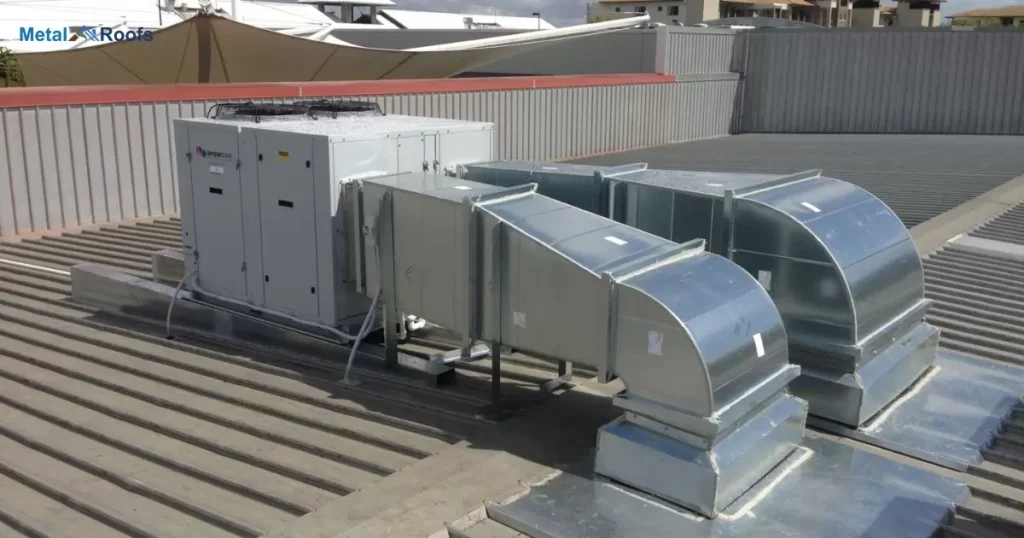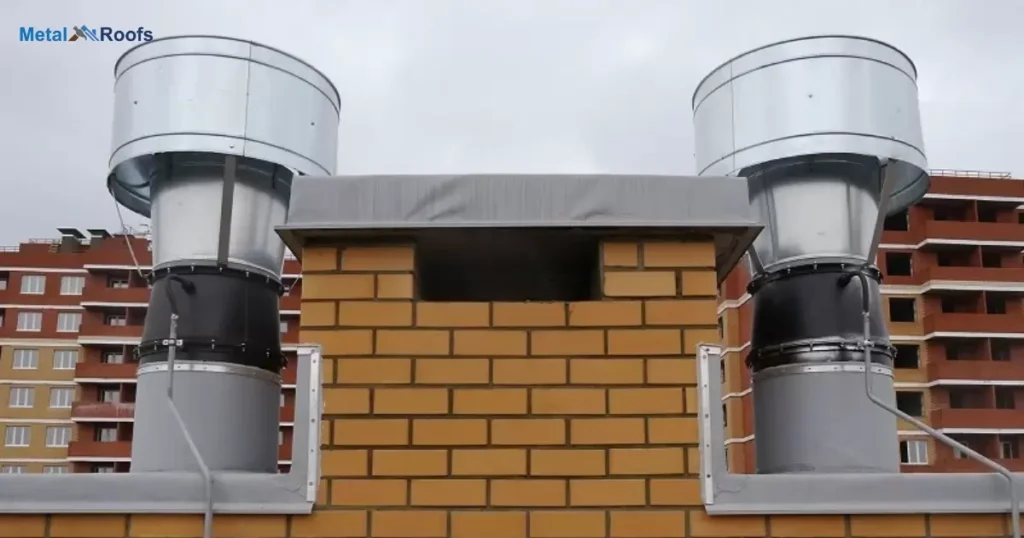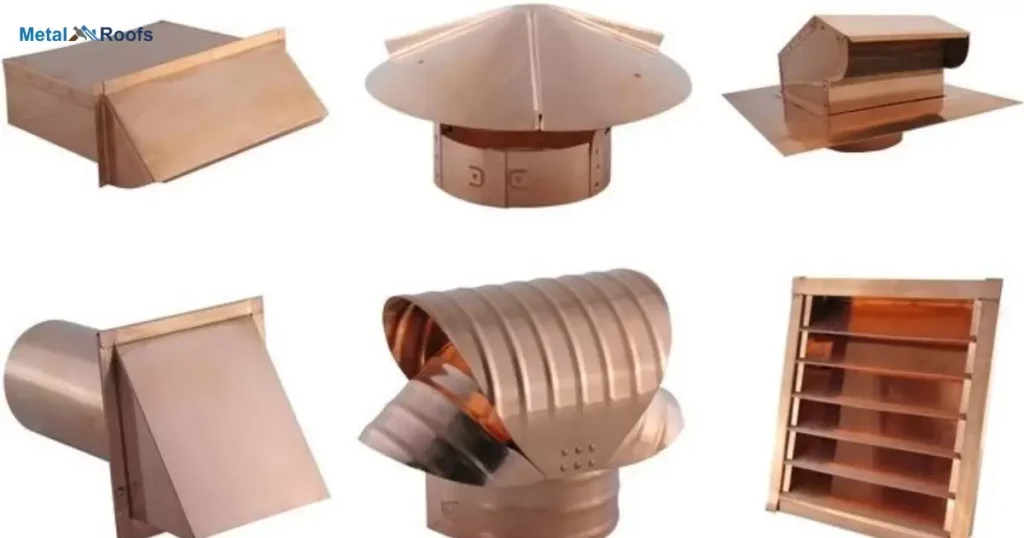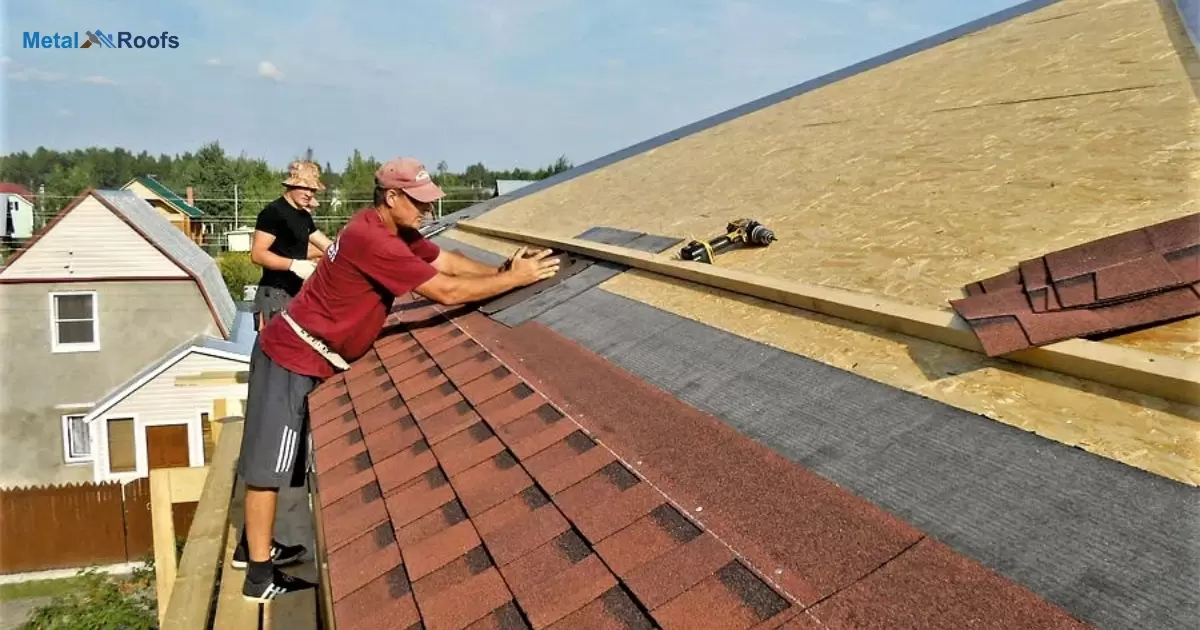Metal roofs need air flow. Vents let heat escape. They stop moisture buildup. Good vents cut energy costs. Proper airflow extends roof life. Vents prevent ice dams in winter. They keep attics cool in summer. Roof vents boost home comfort. Smart design includes roof venting.
Metal roofs are popular. They last long. But they need care. Proper ventilation is key. Many homeowners wonder: does a metal roof need to be vented? This question is important. Good airflow matters. It affects your home. Let’s explore why.
Roofs protect our homes, keeping us dry and safe from the elements. Understanding roofing and proper care, including choosing durable materials like 29 gauge metal roofing, is crucial. Ventilation plays a key role in extending roof lifespan.
Key Takeaways
- Prevents mold, mildew, and rot.
- Enhances energy efficiency.
- Reduces ice dams and thermal stress.
- Removes pollutants and excess heat.
- Uses intake (soffit) and exhaust (ridge) vents for airflow.
Roofing Ventilation
Roofing ventilation is crucial for your home. It controls moisture, preventing mold and rot. Moisture buildup can damage your roof. Proper airflow keeps your attic dry. This helps maintain the structure of your home and the health of your roof.
Ventilation also manages temperature. It keeps your attic cool in summer, reducing heat inside your home. In winter, it prevents ice dams from forming. Proper ventilation extends your roof’s life and improves energy efficiency, saving you money on energy bills.
Ventilation On Roof
Ventilation on a roof is very important. It helps control moisture. This stops mold and mildew from growing. Proper ventilation keeps your attic cool in the summer. It also helps maintain a steady temperature in the winter. This makes your home more energy efficient.
Ventilation extends the life of your roof. It reduces the chance of ice dams. It also limits thermal stress on the roof materials. Good ventilation improves indoor air quality too. It removes pollutants and excess heat from the attic. Use both intake and exhaust vents for the best airflow.
Roof Ventilation Systems

Roof ventilation systems are important for any home. They help control moisture and temperature. Without ventilation, mold and mildew can grow. This can lead to structural damage. Proper ventilation helps keep your attic cool in summer. It also prevents ice dams in winter.
There are two main types of vents. Intake vents let air in, usually through soffits. Exhaust vents let air out, often through the roof’s ridge. Together, they create a balanced airflow. This system improves energy efficiency. It also extends the life of your roof.
Air Vents For Roof
Air vents for roofs are crucial for controlling moisture and regulating temperature. They prevent mold and rot by allowing air to circulate through the attic. This circulation also helps maintain a stable indoor environment by reducing heat buildup in summer and minimizing cold spots in winter.
Balanced ventilation systems, with intake vents like soffits and exhaust vents like ridges, ensure effective airflow. This setup not only extends the lifespan of the roof by reducing stress but also improves overall indoor air quality.
Attic Ventilation
Attic ventilation is essential when you have a metal roof. It helps manage moisture by preventing mold and rot. This type of ventilation also controls temperature, making your home more energy efficient.
By reducing ice dams and stress on the roof, it prolongs its lifespan. It enhances indoor air quality by removing pollutants and excess heat. A balanced ventilation system combines intake and exhaust vents to ensure proper airflow throughout the attic.
Steel Roof Venting

Steel roofs need proper ventilation for several reasons. It helps control moisture, preventing mold and rot. Good ventilation also regulates attic temperature, saving energy. It prolongs roof life by reducing ice dams and thermal stress.
Ventilation improves indoor air quality, removing pollutants and excess heat. A balanced system uses intake and exhaust vents for airflow. This setup ensures efficient ventilation throughout the attic, maintaining a healthy environment and protecting the roof’s durability over time.
Metal Roof Ventilation Requirements
Proper ventilation is crucial for metal roofs. It controls moisture, preventing mold and rot. It also regulates temperature, making homes more energy efficient. Ventilation extends roof life by reducing ice dams and thermal stress.
It improves air quality by removing pollutants and excess heat. A balanced system uses intake (soffit) and exhaust (ridge) vents for airflow. This ensures attic air circulates effectively, benefiting both the roof and the home’s overall environment.
Metal Roof Ventilation Products
Metal roofs require proper ventilation for moisture control and temperature regulation. Ventilation products like soffit vents and ridge vents are crucial. Soffit vents allow cool air to enter the attic, while ridge vents let hot air escape. This airflow prevents moisture buildup, reducing the risk of mold and extending the roof’s lifespan.
It also helps regulate indoor temperatures, improving energy efficiency and comfort year-round. Proper ventilation creates a balanced system, ensuring air moves effectively through the attic, maintaining a healthy environment inside the home.
Metal Roof Ventilation Products

Metal roofs require proper ventilation to manage moisture, control temperatures metal roof, and extend their lifespan. Key products for ventilation include intake vents like soffit vents, which bring fresh air into the attic. These vents are typically installed along the eaves of the roof.
Exhaust vents, such as ridge vents, allow hot air and moisture to escape from the attic. They are positioned along the peak of the roof to ensure balanced airflow. Together, intake and exhaust vents create a system that regulates attic conditions, preventing issues like mold and ice dams.
Types Of Metal Roof Vents
Metal roofs require vents for proper ventilation. There are two main types of vents intake and exhaust. Intake vents, like soffit vents, bring fresh air into the attic. Exhaust vents, such as ridge vents, expel hot air and moisture. Together, they create a balanced airflow, preventing issues like mold and ice dams while improving energy efficiency and roof durability.
Ridge Vents
Ridge vents are installed along the peak of a roof to allow hot air and moisture to escape. They work alongside intake vents like soffit vents to create a balanced airflow. Ridge vents are essential for maintaining temperature regulation and preventing moisture buildup in the attic, contributing to the longevity of a metal roof.
Soffit Vents
Under types of metal roof vents, soffit vents are crucial. They’re installed under the eaves, allowing cool air to enter the attic. This intake of fresh air helps regulate temperature and prevent moisture buildup, essential for maintaining the roof’s longevity.
Gable Vents
Types of metal roof vents include gable vents, which are installed at the ends of the roof ridge. They allow hot air to escape from the attic, promoting airflow. Gable vents work alongside other vents like soffit and ridge vents to maintain a balanced ventilation system.
Frequently Asked Questions
Why Don’t Metal Roofs Have Vents?
Metal roofs often lack vents because they naturally regulate temperature and moisture, ensuring longevity and improving air quality.
Do You Need An Air Gap Under Metal Roofing?
You need an air gap under metal roofing to control moisture, regulate temperatures, and extend roof life.
What Is The Best Venting For A Metal Roof?
The best venting for a metal roof involves a balanced system using intake (soffit) and exhaust (ridge) vents to regulate temperature and prevent moisture buildup.
Conclusion
Proper ventilation for a metal roof is crucial for long-term durability. It controls moisture, regulates temperature, and enhances energy efficiency. Intake vents like soffit vents bring in fresh air, while ridge vents allow hot air and moisture to escape. This balanced airflow prevents mold, extends the roof’s lifespan, and improves indoor air quality by removing pollutants.
By installing both intake and exhaust vents, homeowners ensure effective ventilation. This setup reduces the risk of ice dams and minimizes thermal stress on the roof. Overall, a well-ventilated metal roof maintains a comfortable environment inside the home while preserving the roof’s structural integrity for years to come.











